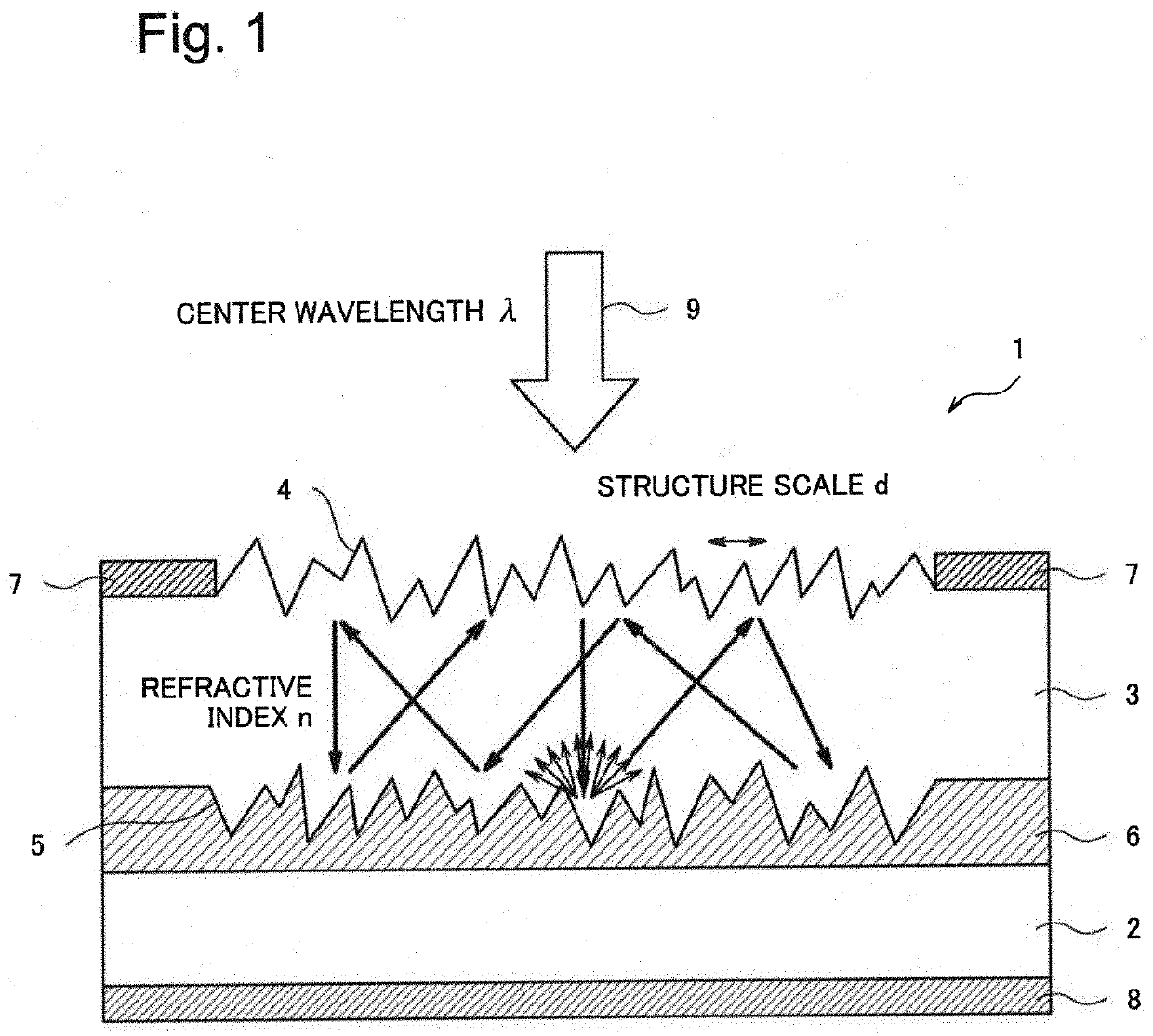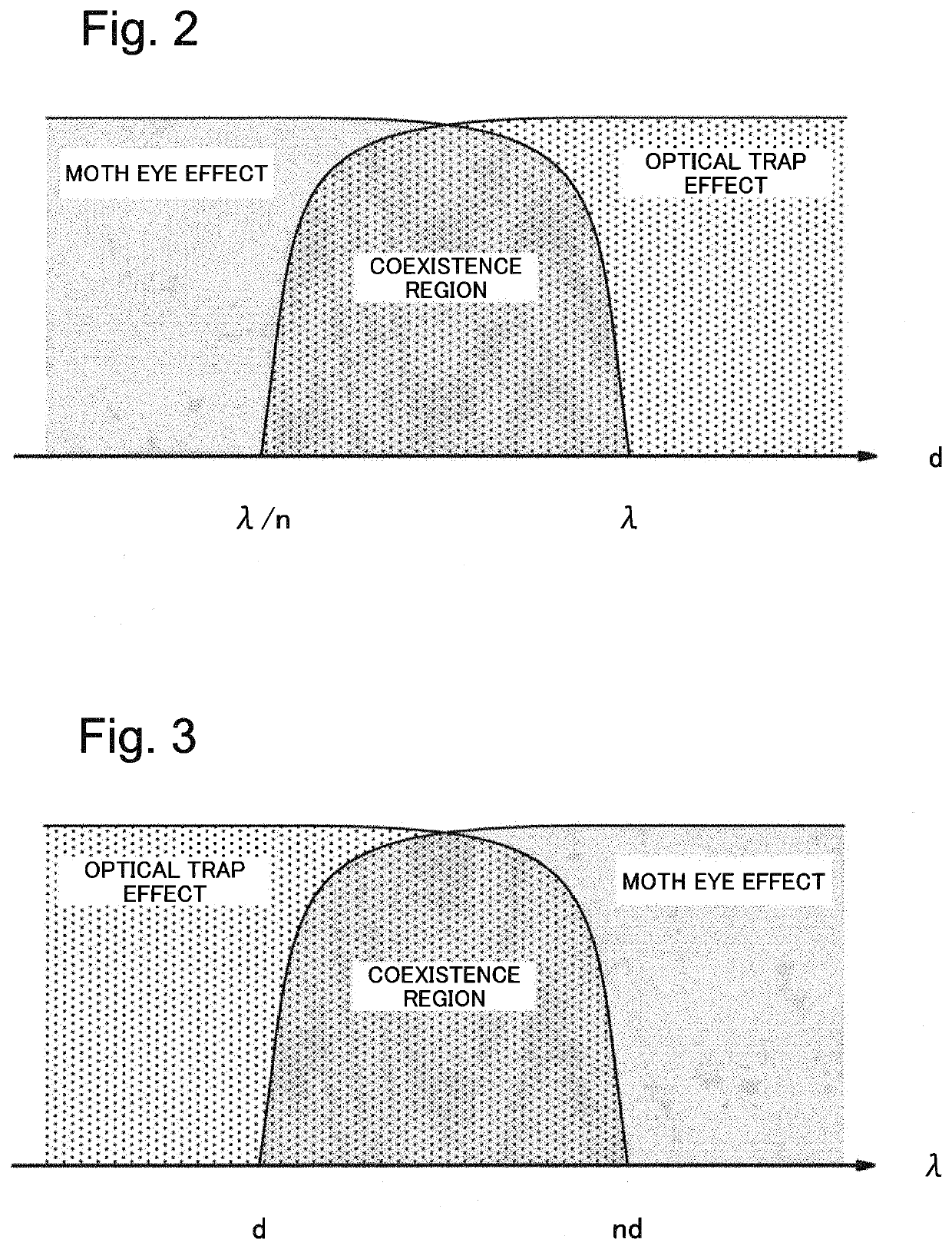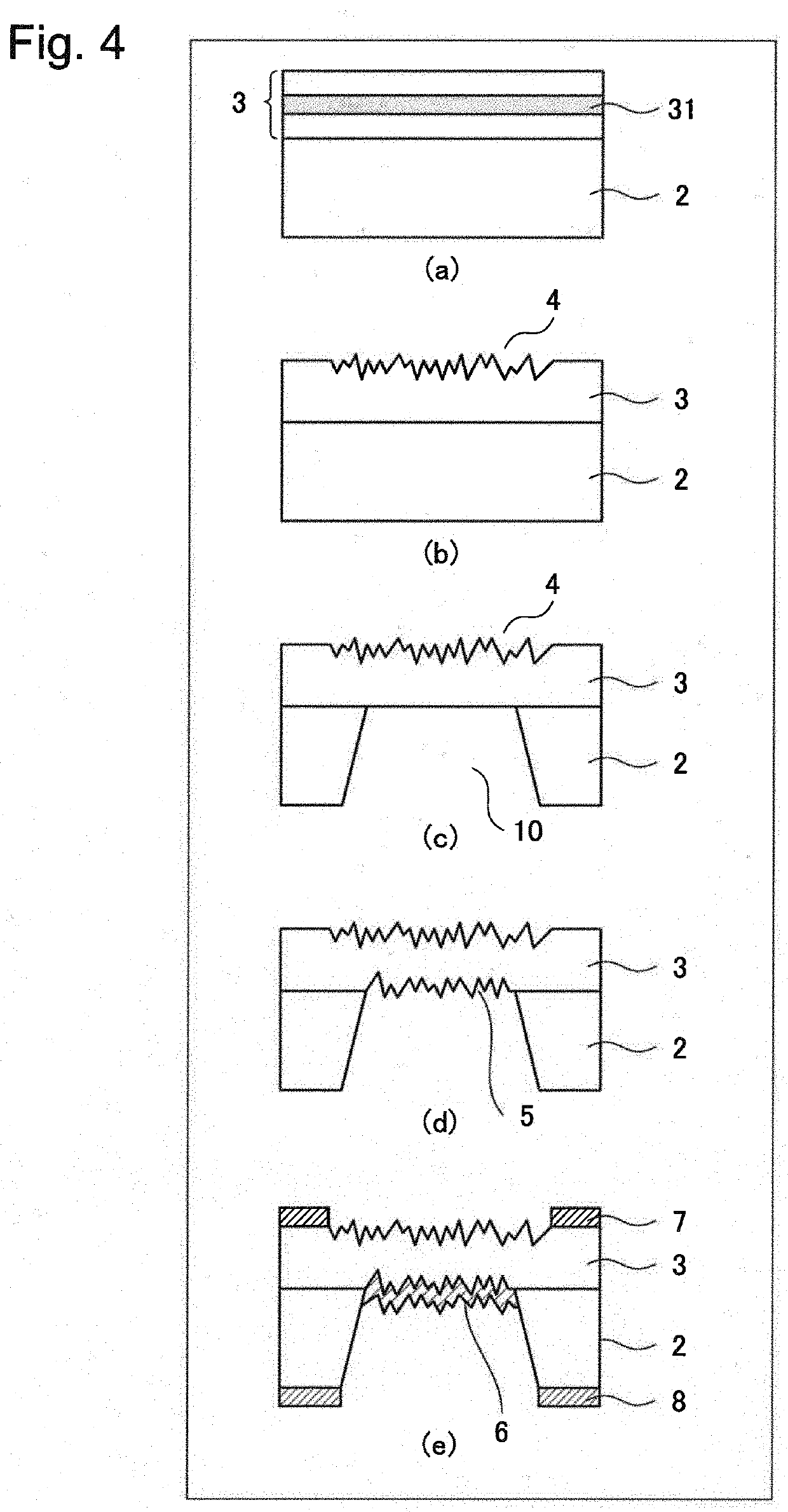Optical sensor and method for forming same
a technology of optical sensors and optical sensors, applied in the field of optical sensors, can solve the problems of reducing the light absorption efficiency, the thickness of the actual optical device cannot be increased without limitation, and the manufacturing cost of silicon crystals with a large l and a high purity, and achieves the effect of simple texture structure and high photoelectric conversion efficiency
- Summary
- Abstract
- Description
- Claims
- Application Information
AI Technical Summary
Benefits of technology
Problems solved by technology
Method used
Image
Examples
first example embodiment
[0041][Description of Structure]
[0042]FIG. 1 is a sectional view schematically illustrating an optical sensor according to a first example embodiment of the present invention. An optical sensor 1 according to this example embodiment is laminated on a substrate 2 as illustrated in FIG. 1 and includes a light absorption medium 3 having a refractive index n and absorbing light of a target center wavelength λ. A thickness of the light absorption medium 3 is sufficiently less than a light transmission length (an inverse of an absorption coefficient). The substrate 2 and the light absorption medium 3 are properly doped. It is possible to pull out a photocarrier generated via light absorption by giving a proper bias to a lower electrode 8 arranged in a lower part of the substrate 2 and an upper electrode 7 arranged in an upper part of the light absorption medium 3. When the substrate 2 is made of GaAs, an n-type semiconductor substrate is formed for example by doping Si about 1 to 3×10−18 ...
second example embodiment
[0075]FIG. 6 is a sectional view illustrating an optical sensor according to a second example embodiment of the present invention.
[0076]An optical sensor 100 according to the example embodiment includes a light absorption medium 300 having a refractive index n and a thickness sufficiently less than a light transmission length. The light absorption medium 300 has a light incident surface texture structure 40. Assuming that an observation target center wavelength is λ, the texture structure has a random surface direction and a typical structure scale d defined as in (λ / n)60 is arranged between the light absorption medium 300 and a substrate 20 in the example embodiment. The light reflector 60 desirably has a high reflectivity.
[0077]In the example embodiment, as in the first example embodiment, light incident having a target center wavelength λ from the vertical directional vicinity (incident light 90) is less reflected at an incident surface by a moth eye effect. At a light incident s...
PUM
| Property | Measurement | Unit |
|---|---|---|
| length | aaaaa | aaaaa |
| refractive index | aaaaa | aaaaa |
| wavelength | aaaaa | aaaaa |
Abstract
Description
Claims
Application Information
 Login to View More
Login to View More - R&D
- Intellectual Property
- Life Sciences
- Materials
- Tech Scout
- Unparalleled Data Quality
- Higher Quality Content
- 60% Fewer Hallucinations
Browse by: Latest US Patents, China's latest patents, Technical Efficacy Thesaurus, Application Domain, Technology Topic, Popular Technical Reports.
© 2025 PatSnap. All rights reserved.Legal|Privacy policy|Modern Slavery Act Transparency Statement|Sitemap|About US| Contact US: help@patsnap.com



